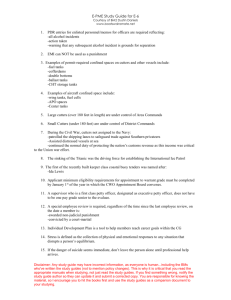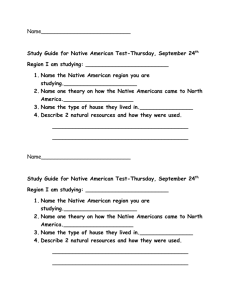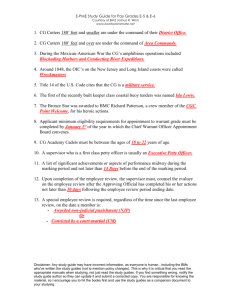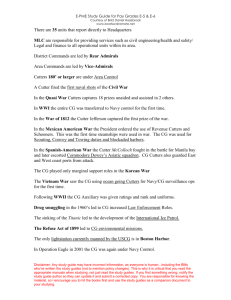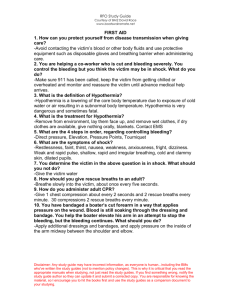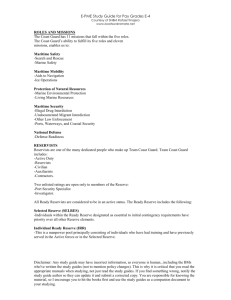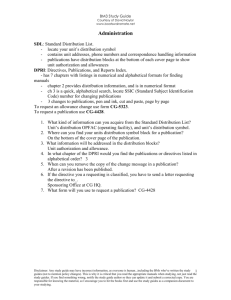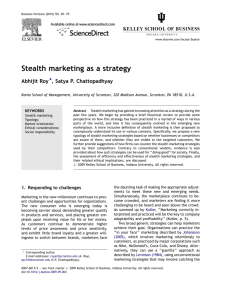The Art of Stealth Studying:
advertisement
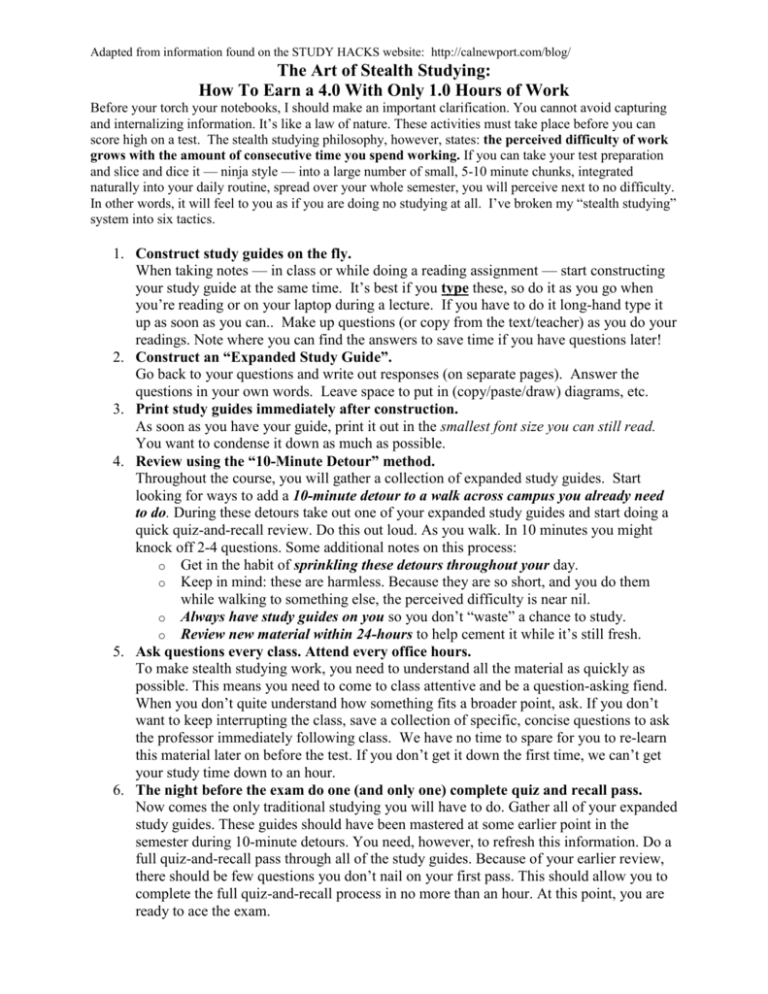
Adapted from information found on the STUDY HACKS website: http://calnewport.com/blog/ The Art of Stealth Studying: How To Earn a 4.0 With Only 1.0 Hours of Work Before your torch your notebooks, I should make an important clarification. You cannot avoid capturing and internalizing information. It’s like a law of nature. These activities must take place before you can score high on a test. The stealth studying philosophy, however, states: the perceived difficulty of work grows with the amount of consecutive time you spend working. If you can take your test preparation and slice and dice it — ninja style — into a large number of small, 5-10 minute chunks, integrated naturally into your daily routine, spread over your whole semester, you will perceive next to no difficulty. In other words, it will feel to you as if you are doing no studying at all. I’ve broken my “stealth studying” system into six tactics. 1. Construct study guides on the fly. When taking notes — in class or while doing a reading assignment — start constructing your study guide at the same time. It’s best if you type these, so do it as you go when you’re reading or on your laptop during a lecture. If you have to do it long-hand type it up as soon as you can.. Make up questions (or copy from the text/teacher) as you do your readings. Note where you can find the answers to save time if you have questions later! 2. Construct an “Expanded Study Guide”. Go back to your questions and write out responses (on separate pages). Answer the questions in your own words. Leave space to put in (copy/paste/draw) diagrams, etc. 3. Print study guides immediately after construction. As soon as you have your guide, print it out in the smallest font size you can still read. You want to condense it down as much as possible. 4. Review using the “10-Minute Detour” method. Throughout the course, you will gather a collection of expanded study guides. Start looking for ways to add a 10-minute detour to a walk across campus you already need to do. During these detours take out one of your expanded study guides and start doing a quick quiz-and-recall review. Do this out loud. As you walk. In 10 minutes you might knock off 2-4 questions. Some additional notes on this process: o Get in the habit of sprinkling these detours throughout your day. o Keep in mind: these are harmless. Because they are so short, and you do them while walking to something else, the perceived difficulty is near nil. o Always have study guides on you so you don’t “waste” a chance to study. o Review new material within 24-hours to help cement it while it’s still fresh. 5. Ask questions every class. Attend every office hours. To make stealth studying work, you need to understand all the material as quickly as possible. This means you need to come to class attentive and be a question-asking fiend. When you don’t quite understand how something fits a broader point, ask. If you don’t want to keep interrupting the class, save a collection of specific, concise questions to ask the professor immediately following class. We have no time to spare for you to re-learn this material later on before the test. If you don’t get it down the first time, we can’t get your study time down to an hour. 6. The night before the exam do one (and only one) complete quiz and recall pass. Now comes the only traditional studying you will have to do. Gather all of your expanded study guides. These guides should have been mastered at some earlier point in the semester during 10-minute detours. You need, however, to refresh this information. Do a full quiz-and-recall pass through all of the study guides. Because of your earlier review, there should be few questions you don’t nail on your first pass. This should allow you to complete the full quiz-and-recall process in no more than an hour. At this point, you are ready to ace the exam. MIND-MAPS http://www.spicynodes.org Go to COOKBOOK. Scroll down the page and click on MIND MAPS. MNEMONICS


